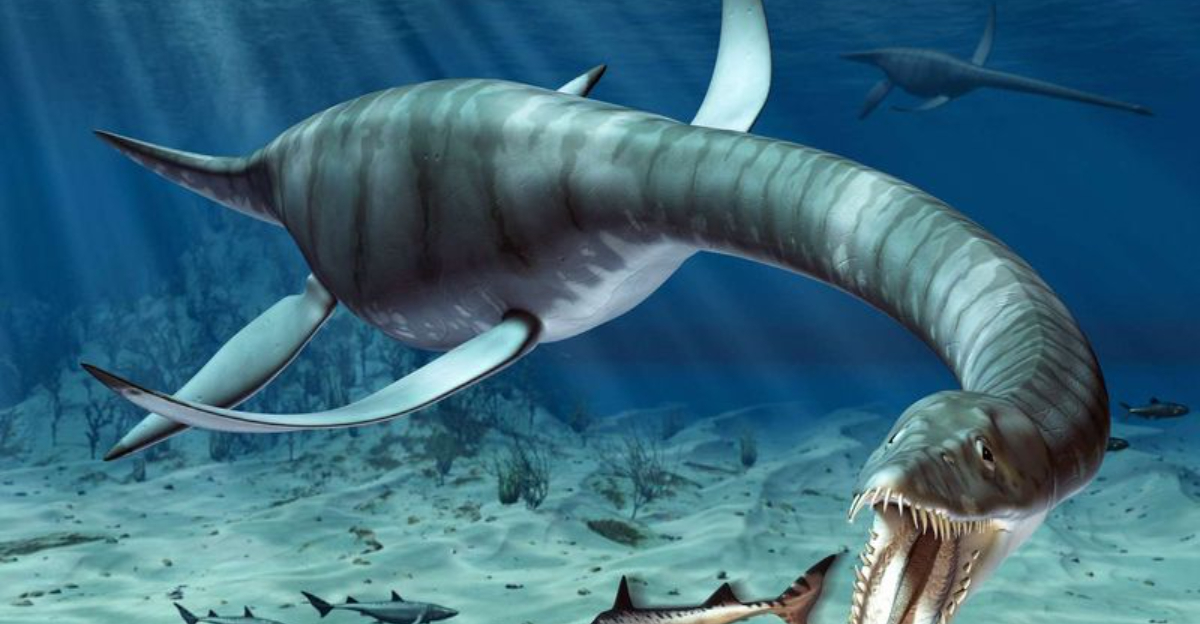The world of dinosaurs is often associated with massive land creatures roaming the Earth millions of years ago.
However, some dinosaurs made their home in the oceans, ruling the waves with their impressive size and hunting skills.
Today we’ll explore 7 fascinating marine dinosaurs that dominated the ancient seas. From ferocious predators to gentle giants, these ocean-dwelling dinosaurs showcase the incredible diversity and adaptability of prehistoric life.
1. Plesiosaurus
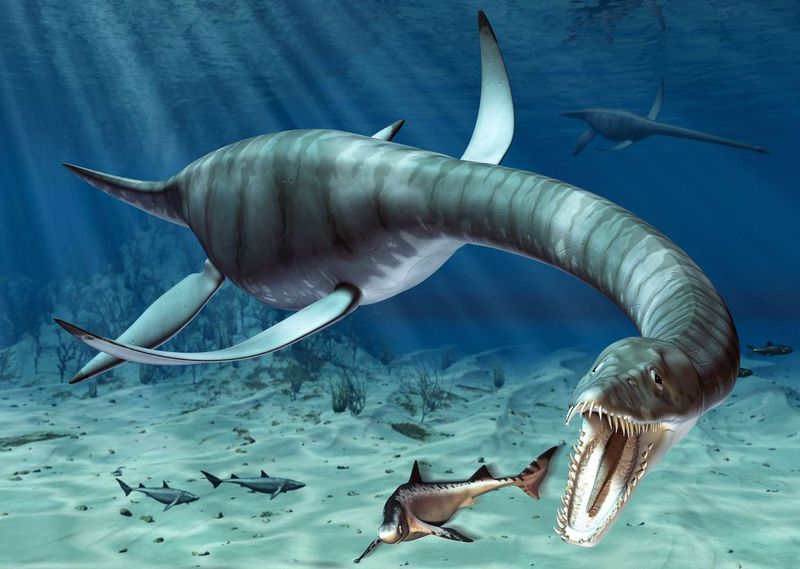
Plesiosaurus was a remarkable marine reptile that lived during the Jurassic period. Known for its distinctive long neck, which could reach up to half its body length, Plesiosaurus used its paddle-like flippers to navigate the ancient seas.
These creatures were adept swimmers, gliding through the water with a grace that belied their size.
Their diet mainly consisted of small fish and squid, which they likely caught using their long necks to strike swiftly.
Some scientists believe that Plesiosaurus may have used a method similar to modern-day sea turtles, flapping their flippers synchronously to propel themselves forward.
Despite its fearsome appearance, Plesiosaurus was not the top predator of its time. It had to be vigilant, as larger marine reptiles posed a constant threat.
Plesiosaurus fossils have been discovered in various parts of the world, indicating its widespread distribution in ancient oceans.
2. Mosasaurus
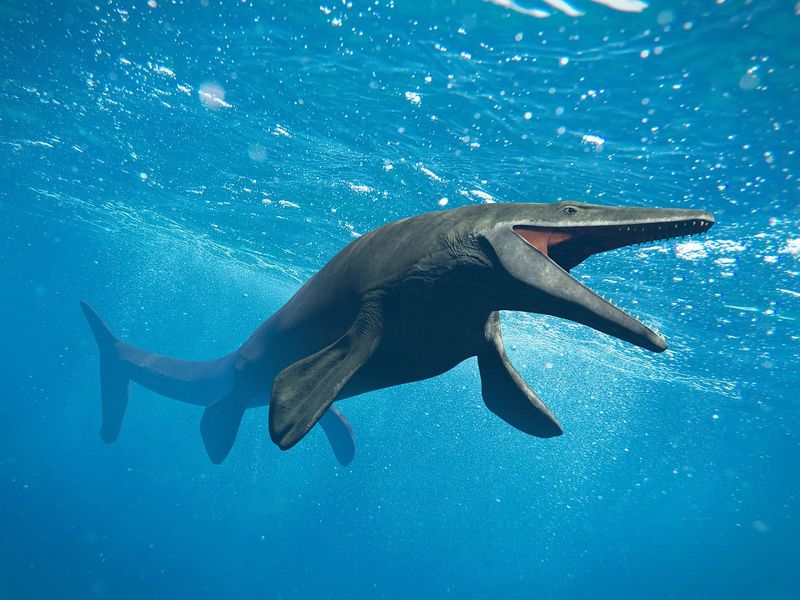
This ancient creature was one of the largest marine predators of the Cretaceous period, often compared to the size of modern whales.
With its long, streamlined body and powerful tail, Mosasaurus was built for speed and strength, making it a formidable hunter. Its jaws were equipped with sharp teeth, perfect for catching large fish and other marine creatures.
The Mosasaurus had a unique method of hunting, using its sense of smell to track down prey from great distances.
Once it zeroed in on its target, it would close in with incredible speed, ensuring a successful catch. Fossils show that these creatures could grow over 50 feet long, making them the kings of their underwater domain.
Mosasaurus faced competition from other marine reptiles and even some large fish. Its remains have been found in various locations, including Europe and North America, showcasing its adaptability to different marine environments.
3. Liopleurodon
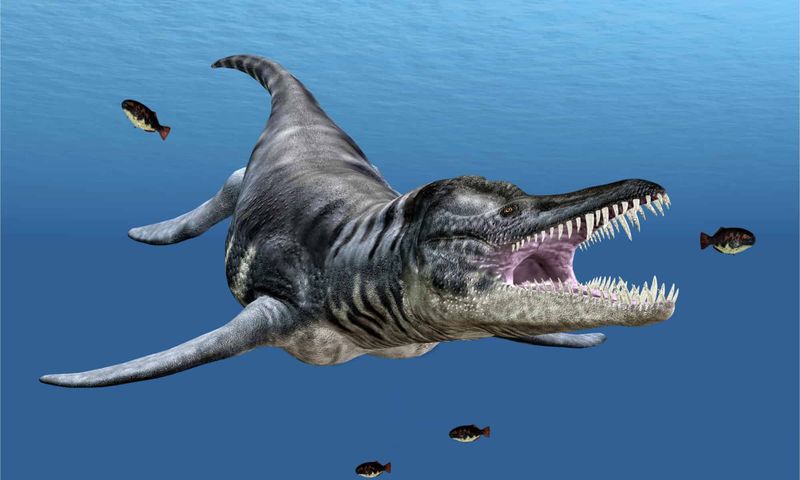
Liopleurodon was a massive carnivorous marine reptile that roamed the oceans during the Middle to Late Jurassic period.
Known for its enormous jaws and sharp teeth, Liopleurodon was a fearsome predator capable of taking down large prey, including other marine reptiles. Its powerful flippers allowed it to maneuver quickly, making it a relentless hunter.
Liopleurodon’s hunting strategy involved ambushing its prey, using its keen sense of smell and sight to detect movement in the water. Once it identified its target, it would strike with precision and force, leaving little chance for escape. It was one of the top predators of its time, feared by many sea creatures.
Fossil evidence suggests that Liopleurodon could grow up to 25 meters in length, although some estimates suggest even larger sizes. These creatures dominated the seas of what is now Europe, leaving a legacy as one of the most formidable marine reptiles in history.
4. Ichthyosaurus
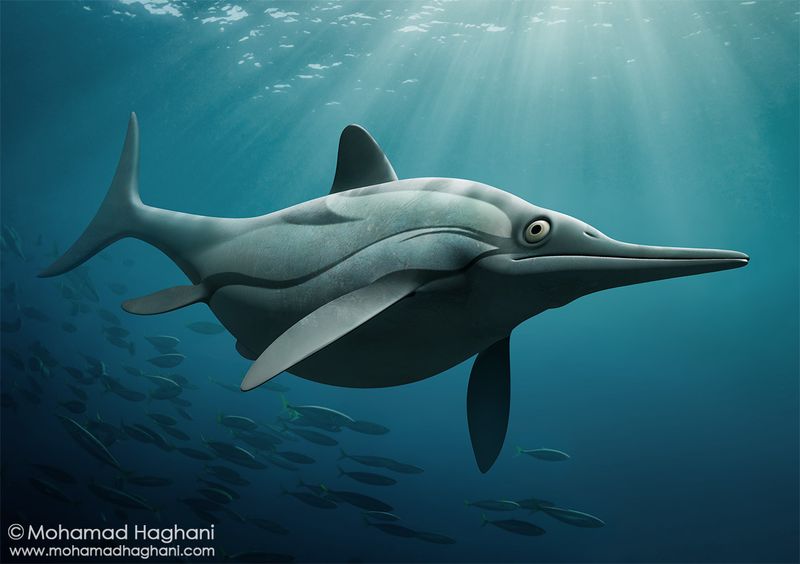
This dino was a sleek, dolphin-like marine reptile that thrived during the early Jurassic period. Its streamlined body and elongated snout made it an efficient swimmer, allowing it to chase down prey with ease. Ichthyosaurus primarily fed on fish and squid, using its sharp teeth to catch slippery meals.
One of the most remarkable features of Ichthyosaurus was its ability to give birth to live young, a trait that distinguished it from many other marine reptiles.
This adaptation allowed it to thrive in various oceanic environments, from shallow coastal areas to deeper waters.
The remains of Ichthyosaurus have been discovered in several parts of the world, including Europe and North America. These findings highlight its widespread presence and success as a marine predator.
5. Kronosaurus
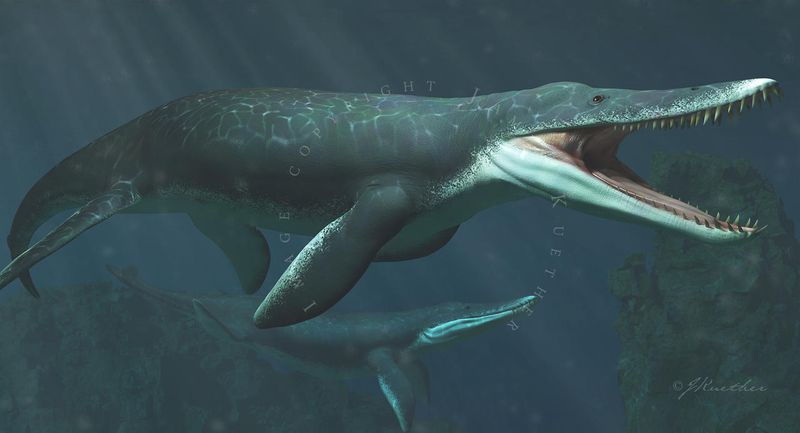
Kronosaurus was a giant marine reptile that lived during the Early Cretaceous period, known for its immense size and powerful jaws.
Measuring up to 10 meters in length, it was one of the largest pliosaurs, a group of short-necked plesiosaurs. Its formidable appearance and hunting prowess made it a top predator in its marine habitat.
Kronosaurus preyed on large fish and other marine reptiles, using its strong jaws to crush bones and shells. It would hunt near the ocean surface, relying on its keen senses to detect movement in the water. This ability allowed it to ambush prey effectively, ensuring a successful catch.
Fossils of Kronosaurus have been found in Australia and Colombia.
6. Tylosaurus
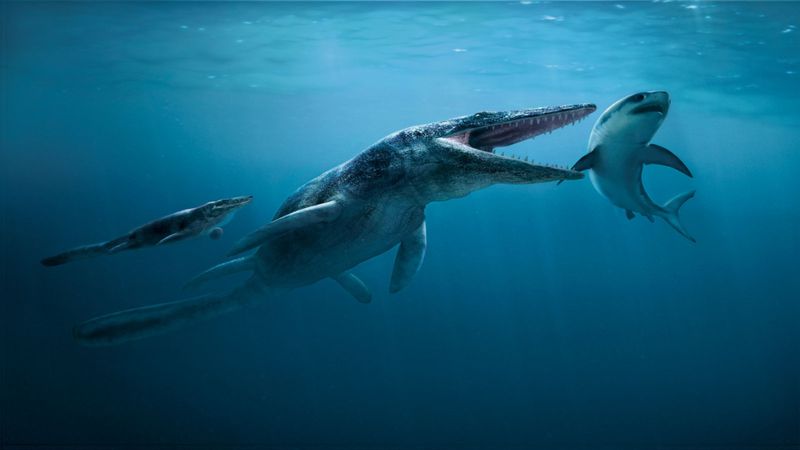
This large creature lived during the Late Cretaceous period, renowned for its elongated body and powerful tail.
As a top predator, it dominated the ocean food chain, preying on fish, squid, and even other marine reptiles. Its sharp teeth and strong jaws enabled it to tackle various prey effectively.
What set Tylosaurus apart was its exceptional agility in the water. Its streamlined body allowed it to move swiftly, outmaneuvering prey with ease. This ability, combined with its hunting skills, made Tylosaurus a fearsome presence in the ancient seas.
Fossils of Tylosaurus have been discovered in North America, providing valuable information about its lifestyle and habitat.
7. Elasmosaurus
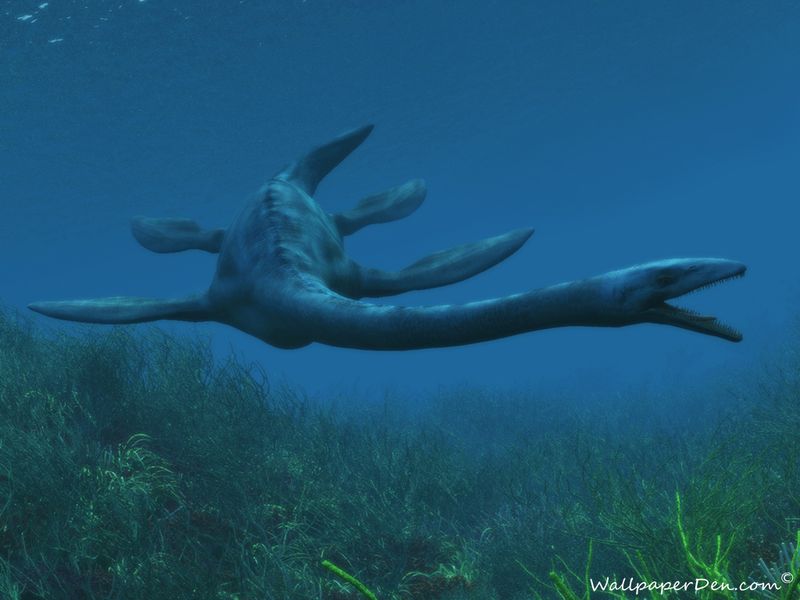
Elasmosaurus was a fascinating marine reptile known for its extraordinary long neck, which made up nearly half of its total body length.
Living during the Late Cretaceous period, Elasmosaurus was a member of the plesiosaur family, gliding through the oceans with elegance and precision.
Its diet primarily consisted of small fish and crustaceans, which it captured using its long neck to strike with speed and accuracy.
The unique body structure of Elasmosaurus allowed it to remain relatively stationary while extending its neck to catch prey, a method that proved efficient in its aquatic environment.
Elasmosaurus fossils have been found in North America, providing insight into its wide distribution and adaptation to marine life.
With its graceful appearance and hunting abilities, Elasmosaurus represents one of the many wonders of prehistoric marine ecosystems. Its legacy continues to spark interest and admiration among scientists and dinosaur enthusiasts today.

